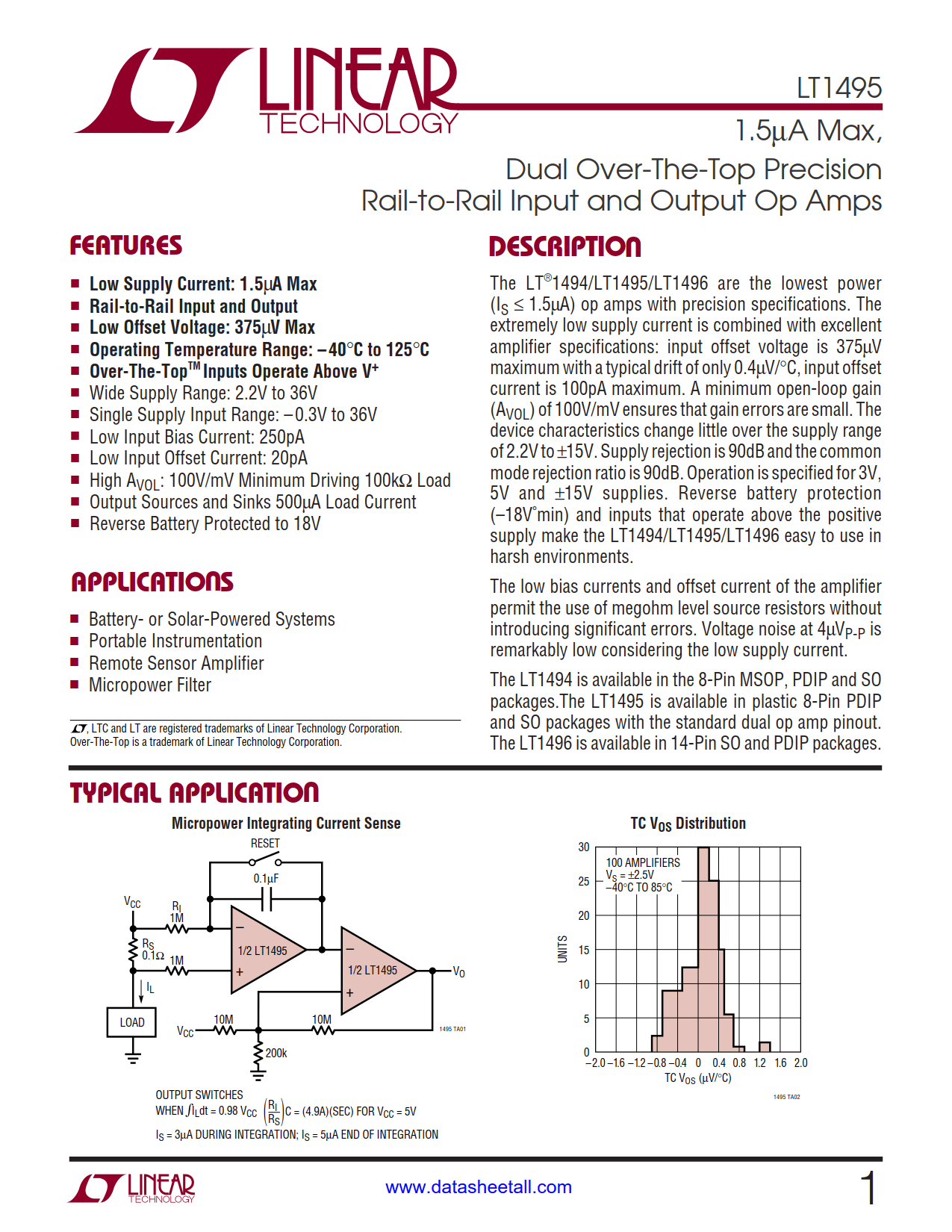
LT1495 Datasheet
1.5µA Max, Dual Precision Rail-to-Rail Input and Output Op Amps

1.5µA Max, Dual Precision Rail-to-Rail Input and Output Op Amps
| Part No. | In Stock | Price | Packaging | SPQ | Marking | MSL | Pins | Temp Range | Package Description |
The LT1495 are the lowest power (IS ≤ 1.5µA) op amps with precision specifications. The extremely low supply current is combined with excellent amplifier specifications: input offset voltage is 375µV maximum with a typical drift of only 0.4µV/°C, input offset current is 100pA maximum. A minimum open-loop gain (AVOL) of 100V/mV ensures that gain errors are small. The device characteristics change little over the supply range of 2.2V to ±15V. Supply rejection is 90dB and the common mode rejection ratio is 90dB. Operation is specified for 3V, 5V and ±15V supplies. Reverse battery protection (–18V min) and inputs that operate above the positive supply make the LT1495 easy to use in harsh environments.
The low bias currents and offset current of the amplifier permit the use of megohm level source resistors without introducing significant errors. Voltage noise at 4µVP-P is remarkably low considering the low supply current.
The LT1495 is available in plastic 8-Pin PDIP and SO packages with the standard dual op amp pinout.